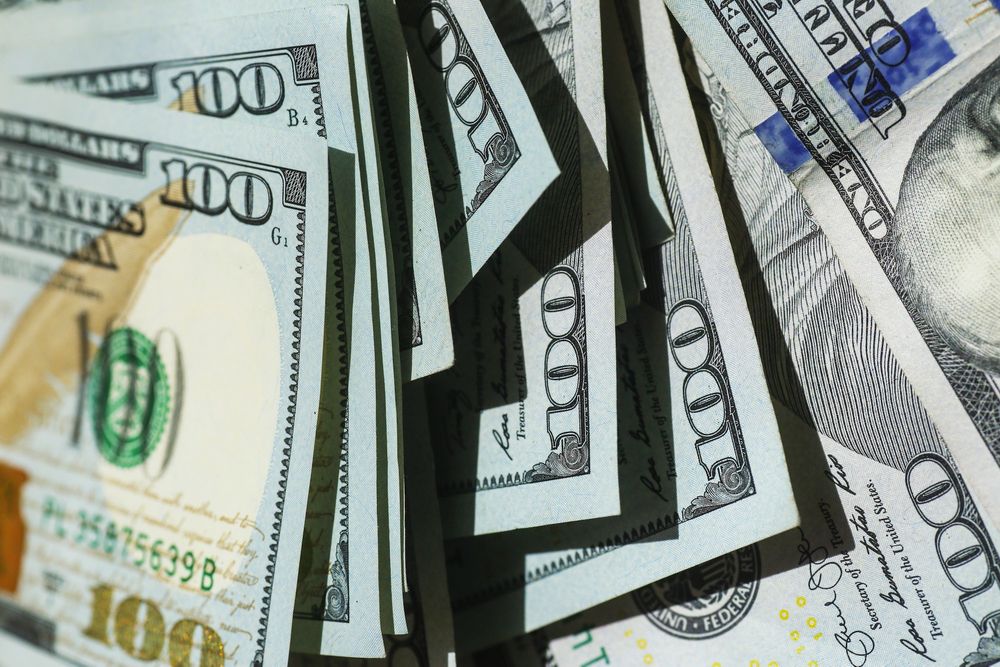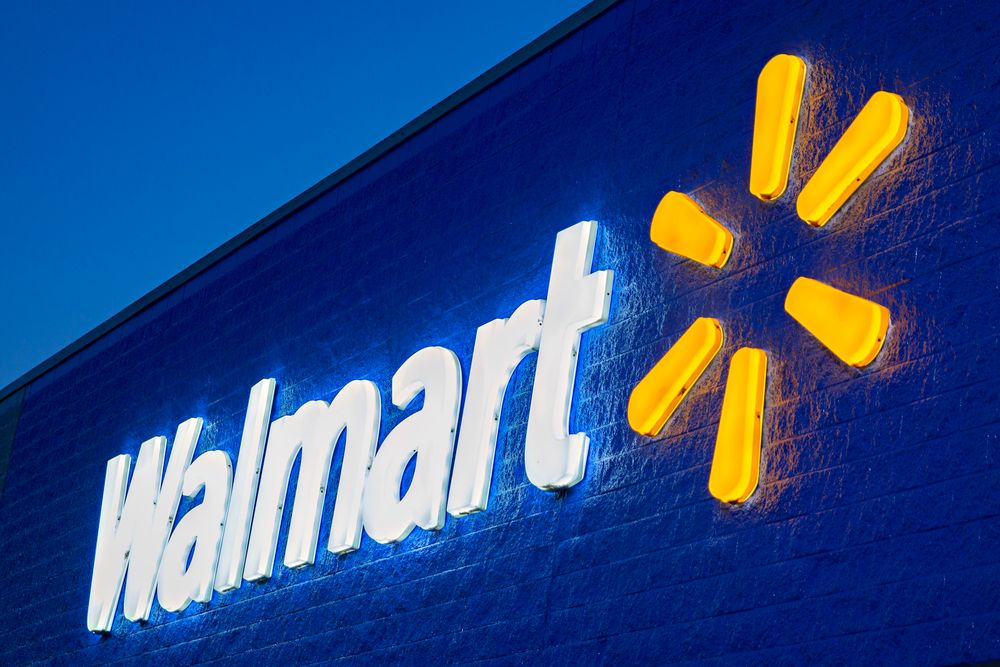|
Hello and happy Friday. Spotify made a playlist with original songs dedicated to CMOs. Because if there’s anything that gets music lovers hyped, it’s jamming out with the C-suite.
In today’s edition:
- Streaming thievery
- Virginia is for influencers
- Walmart’s shiny new toy
— Ryan Barwick, Phoebe Bain
|
|
|
Photo by Giorgio Trovato on Unsplash
|
Apparently, streaming fraud goes a lot deeper than sharing your Hulu password with your roommate. According to a report by Method Media Intelligence, a digital ad measurement firm, one group of bad actors has been able to scam as much as $10 million a month from ad budgets that were supposed to go toward connected TV, or CTV, like streaming platforms.
Here’s how they do it: The five-person team identified by MMI inserts itself into the programmatic bid stream by posing as a platform (is Fraud+ taken?) like Hulu, and submitting “phantom ad requests.” And media buyers fall for it—or, at least, pay for it, according to MMI, which declined to tell Marketing Brew how it found the perpetrators.
“They are fabricating the existence of an ad slot,” explained Shailin Dhar, CEO and founder of MMI, to Marketing Brew, noting that “there are a lot of buyers desperate to show they bought CTV,” even if an ad never ran.
Watch me if you can
MMI estimates that as much as 50% of programmatic requests in connected TV are counterfeit. The firm says they are tracking at least 20 other similar operations. That’s a lot of  . .
- Instead of calling out the bad actors to shut down any potential scam, MMI, which makes its money from snooping out this kind of fraud on behalf of clients, is hoping to shed light on the technique used to rob marketers of their $$.
- At the end of the day, the CTV platforms are still making money. “The demand is always there…It’s not like buyers buy less because that one scam operation isn’t making things available for sale anymore,” said Dhar. “This entire marketplace runs on advertisers’ budgets.”
In the CTV space, advertisers still rely on the platforms themselves to verify impressions, reach, and if an ad actually ran, according to Dhar. A key way to root out fraud would be a shift toward “a validated currency with some integrity behind it,” he said, like Nielsen metrics for traditional TV.
To avoid fraud, Ira Maher, VP at integrated marketing and advertising agency The Basement, doesn’t work with a verification partner, but does try to spend ad budgets directly with a streamer, as opposed to buying through third parties. He says no measurement company has “cracked the code” to provide the industry with reliable metrics.
“There’s no question that fraud is an issue, exacerbated by the opacity of the CTV marketplace in general,” Maher told Marketing Brew. “The industry has grown so quickly in the last year that the necessary architecture just isn’t in place.”
Zoom out: CTV is billed as the new frontier of advertising, as it merges the best of linear TV (Seinfeld) with automated ad delivery that’s personalized for viewers. But for now, it still appears to be the Wild West.—RB
|
|
|
Anna Hartman // Visit Williamsburg
|
Visit Williamsburg—the destination marketing org behind the land of eighth grade field trips—rolled out an influencer marketing program in July 2020. It’s pretty extensive, especially for a town more famous for women in hoop skirts and bonnets than Kardashian look-alikes.
- CEO Victoria Cimino told Marketing Brew that VW was one of the first US tourism orgs to resume marketing efforts during the pandemic.
- “Influencer marketing was an effective way to show firsthand how the destination was reopening safely,” Cimino told us.
So far, so good: VW has “hosted 37 influencers, including Olympic gold medalist Shawn Johnson East,” per The Virginia Gazette. More than 120 local businesses and sites have participated in the program so far, and VW compensates influencers for their visits.
Crunchin’ numbers: 7% of VW’s $9.1 million paid media budget goes to the influencer marketing program. It’s spent about $246,000 so far in 2021.
It’s paying off
Cimino told us VW has gained 11,980 Instagram followers, an 83.1% increase, since the program started.
-
Despite spring 2021 tourism indicators still down from 2019 (thanks, Covid), Cimino said that first-time visits to VW’s website have increased since making these influencer moves, “with more than 80% of visitwilliamsburg.com users being first-time visitors.”
- She also noted “improved” overall destination perception and awareness.
Looking ahead: Cimino told us the influencer program will soon expand to TikTok  .—PB .—PB
|
|
|
|
There are few bigger retail shifts than the transformational power of account-based marketing. It’s turning marketing, sales, and CS teams into full-funnel revenue generators.
Which, yeah, does sound cool. But also, yeah, sounds like a lot of work. That’s why Terminus is here to make ABM as easy as saying your ABCs.
Their ABM Campaign Workbook is a step-by-step guide to planning and executing your campaigns. It lays out all the relevant strategies, targeting options, plays, and KPIs for your, we’ll say it again, transformational ABM campaign.
You know we love ourselves some bullet points. So you’ll also find:
- Best-in-class example campaigns
- A T.E.A.M. Framework explanation
- Worksheets for every phase of an ABM campaign
- And a heck of a lot more!
So, if you’re ready to fill your funnel with revenue, you need this guide from Terminus.
Get the ABM Campaign Workbook here.
|
|
|
Walmart
|
It might be a game changer for the industry, but good luck trying to buy a cocktail with a Walmart ID.
Walmart is flexing its first-party muscle by rolling out a demand-side platform, Walmart DSP, that allows advertisers to leverage its customer data for campaigns. It will be operational this October.
- Walmart’s offering is built upon ad tech firm The Trade Desk’s infrastructure, matching the retailer’s shopper information with the scale of one of the largest DSPs in the biz.
“It’s all first-party data. So we look at our data, we append an ID on to it, we are looking at a post-cookie world,” Rich Lehrfeld, SVP at Walmart Connect, the company’s media business, told Ad Age.
-
Quite conveniently, The Trade Desk is pitching publishers and advertisers on its own third-party cookie replacement, Unified ID 2.0.
Through The Trade Desk, advertisers will be able to reach Walmart customers and audience segments outside Walmart’s own e-commerce platform.
Why this matters: Walmart knows a lot about its shoppers—150+ million of them weekly, both in-store and online.
As third-party cookies disappear, marketers are hungry for first-party data to reach the right customers at the right time. That’s partly why Target, Kroger, CVS, and most famously, Amazon have all ramped up their advertising platforms over the past couple of years.
Bottom line: “Retailers have woken up to the realization that the data they have about audiences and consumers is extremely valuable. They’re eager to monetize that data for everything it’s worth,” Eric Schmitt, an analyst at Gartner, told Marketing Brew.—RB
|
|
-
Apple will allow developers to more easily advertise payment options outside the App Store, and a $100 million settlement—part of Apple's response to a class-action lawsuit—will let some developers recoup commission fees.
-
Coinbase tapped a former Facebook marketing exec as its first CMO.
-
Taboola is giving its clients access to brand safety tools through a partnership with DoubleVerify.
-
Taco Bell will host a collegiate debate about whether its new menu item is a taco or a sandwich.
-
Mtn Dew and Flamin’ Hot Cheetos are collabing to make…Flamin’ Hot Mtn Dew. There’s also streetwear involved.
|
|
SPONSORED BY ROUNDEL BY TARGET
|
|
Media is changing. Let’s change media for good. Meet Roundel, media reimagined by Target. They’re a company built on the idea of using people-based (first-party) data for good, maintaining brand-safe environments, and driving business results. See how they can connect your brand to their audiences on- and off-platform—even if your brand is not sold at Target—for marketing programs that drive actual results. Learn more here.
|
|
|
Francis Scialabba
|
There are a lot of bad marketing tips out there. These aren't those.
UX: Running a website? Spare your visitors from this all-too-familiar experience.
SEO: Bringing traffic to a local business is hard. Avoid these 15 SEO mistakes to make it easier.
Instagram: Search rankings on the app can be elusive. The platform offered this blog post to help you understand how it works.
Personalized Marketing: It’s hard. But Iterable’s Personalization for Dummies takes the rocket science out of how to connect with your customers, drive growth, and stay competitive. Create your perfect personalization strategy and download the e-book today.*
*This is sponsored advertising content
|
|
|
Catch up on a few Marketing Brew stories you might have missed.
|
|
AD TECH COMPANY OR PHARMA BRAND?
|
|
Could Comirnaty and Spikevax have been ad tech companies in another life? We’ll never know. Two of these are real ad tech companies. The rest are pharmaceutical brands. Can you find them? Keep scrolling for the answers.
- Xolair
- Zedo
- Clarivoy
- Nexium
- Nucala
|
|
AD TECH COMPANY OR PHARMA BRAND ANSWERS
|
|
Xolair and Nucala are asthma treatments marketed by Roche and GSK, respectively. Nexium is a heartburn medication from AstraZeneca.
|
|
|
Written by
Phoebe Bain and Ryan Barwick
Illustrations & graphics by
Francis Scialabba
Was this email forwarded to you? Sign up here.
|
ADVERTISE // CAREERS // SHOP // FAQ
Update your email preferences or unsubscribe here.
View our privacy policy here.
Copyright © 2021 Morning Brew. All rights reserved.
22 W 19th St, 8th Floor, New York, NY 10011
|
|











